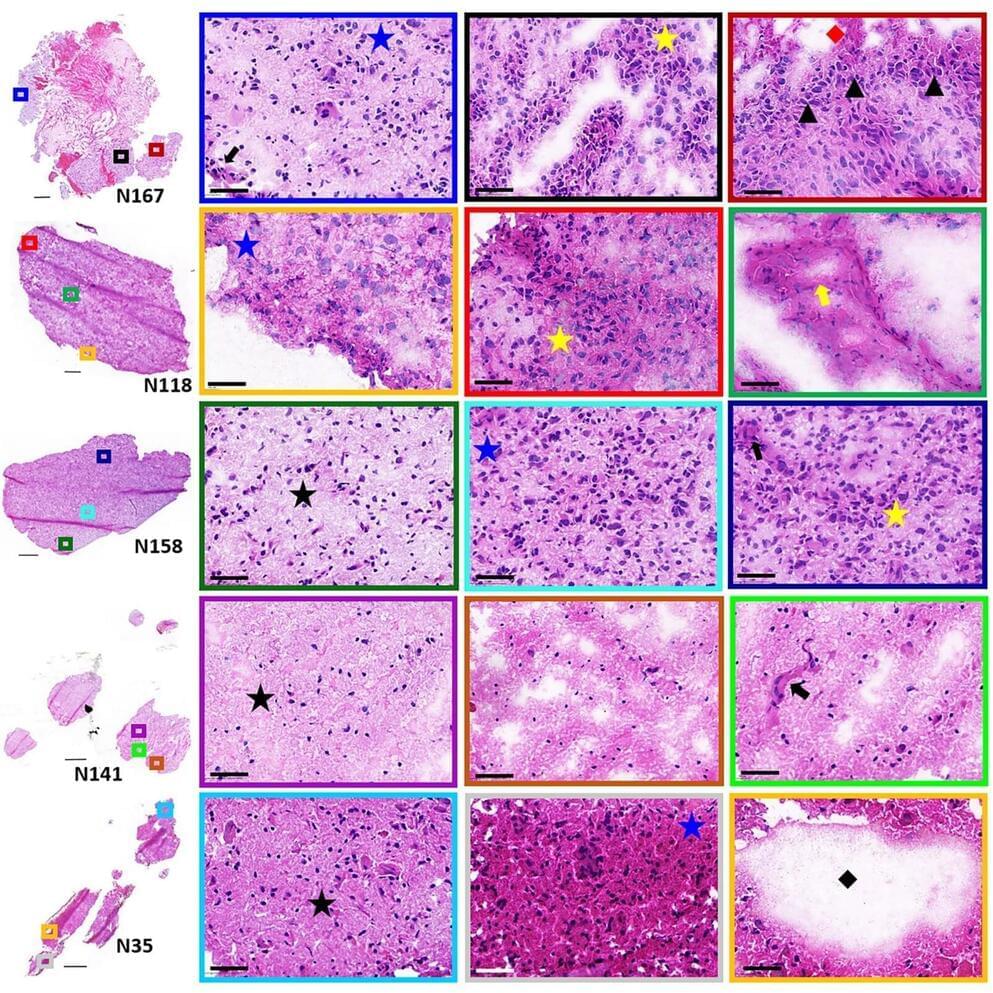Get the latest international news and world events from around the world.

Scientists Just Discovered an Entirely New Way of Measuring Time
Marking the passage of time in a world of ticking clocks and swinging pendulums is a simple case of counting the seconds between ‘then’ and ‘now’.
Down at the quantum scale of buzzing electrons, however, ‘then’ can’t always be anticipated. Worse still, ‘now’ often blurs into a haze of uncertainty. A stopwatch simply isn’t going to cut it for some scenarios.
A potential solution could be found in the very shape of the quantum fog itself, according to researchers from Uppsala University in Sweden.

Social research and experiments with GPT-3
There have been various papers and articles recently that discuss the ‘personality’ of GPT-3 and seek to identify its biases and perspectives. What I’m writing about today is the opposite of that. Rather than probe GPT-3 for its identity, some researchers are what is possible when GPT-3 is prompted to assume a specific identity and respond as a proxy for that identity, with all its biases.
It turns out that it can simulate another human’s perspective with sufficient fidelity that it can act as a proxy for a diverse population of humans in social experiments and surveys. This is accomplished by inventing a population of participants described by a backstory or a set of attributes including things like gender, race, income, occupation, age, political identity, etc. For each virtual person a prompt (or prompt chain) is created that establishes the identity and asks GPT-3 to effectively act as that person in a response to a question or scenario.
One example is the study “Using Large Language Models to Simulate Multiple Humans” in which four different social experiments are recreated with virtual subjects modeled to mirror the real study’s participants. The experiments were the Ultimatum Game, garden path sentences, risk aversion, and the Milgram Shock experiments. The ultimatum game is a game theory scenario as follows: There is a sum of money and two subjects, let’s say Bob and Carol. Bob must offer Carol a portion of the money. If Carol accepts, then she gets that amount of money and Bob gets the rest. If instead the offer is rejected, neither get any money.

A teacher allows AI tools in exams — here’s what he learned
AI tools are making their way into classrooms: even in schools today, students create texts, presentations, images and translations at the click of a button. How can teachers deal with AI’s new possibilities?
For many teachers, homework, papers and tests raise the question of autonomy. How should they grade exams if it’s not clear who did the work – the examinee or an AI? A common reflex to digital developments in education is to regulate these possibilities, to put digital devices into exam mode without network access, or to ban AI tools.
The Evangelisch Stiftische Gymnasium in Gütersloh, Germany, is taking the opposite approach: laptops and iPads have been widely used there for 20 years. GPT-3 and Co. are being tested in German lessons and are even required for class tests.

Want To Live Longer? How Life Extension Industry Will Reboot Health, Wellness and The Economy
Do you want to live a better, healthier and longer life? Me too.
Lets go back to 1937, when Albert Szent-Györgyi won a Nobel Prize for his discovery of ascorbic acid—vitamin C—that enables the body to efficiently use carbohydrates, fats, and protein (I use it a lot during cold and flu season, you?). It was a massively consequential discovery, as it not only saved and extended countless lives, but it also contributed to the foundations of modern nutrition. Szent-Györgyi, himself, was blessed with a long life; he died in 1986 at the age of 93. But he might just as well be known for what he said on his 90th birthday: “I wish I could be 75 again!”
No doubt, that comment elicits more than a few eyerolls today. Especially since the CDC has recently downgraded American life expectancy to just 77 years. But could 75 someday be the new 40—an age by which, like Szent-Györgyi, we’re only hitting our stride? Well, if the burgeoning activity of the life extension industry is any indication, we may actually be on the cusp of making it so—and enjoying life to the fullest right up to the extended end. Which brings us to the morbid thought of mortality—that end state most of us seek to delay, if not dodge.

Seeking microscopic clues to beating deadly brain tumors
A critical new pathway to treating an aggressive brain tumor might be found in the complex diversity within the tumor tissue, according to a new paper by scientists from the Hackensack Meridian Center for Discovery and Innovation (CDI).
The CDI laboratory deeply analyzed tumor tissue using an advanced mass spectrometry with special focus on lipids, a class of molecules that includes fats, according to the new paper, in the journal Scientific Reports.
“Lipid ions presented here lay the foundation for future studies that are required to understand their interconnecting signaling pathways in relation to cell function, tumor progression, and resistance to therapy,” according to the paper. “Understanding their functional relevance is essential for the identification of new therapeutics based on lipid pathway targets.”
Lockheed Martin’s fusion-powered fighter and bomber plans
A fascinating new look at the patents and defense projects in the US Military and its hopefully fusion powered future. (FUSION POWER: Only 20 years away for the last 40 years!! 😉)
Back in 2018, Lockheed Martin filed a patent for something it called a “plasma confinement system” — a device small enough to fit inside the fuselage of an F-16 Fighting Falcon that is capable of managing internal temperatures 10 times hotter than the center of the sun.
This scalable device was designed to play a vital role in containing an approach to power production that some still consider science fiction: nuclear fusion. Now, recent advancements in the field are making fusion power look not just possible, but potentially even feasible. In the coming years, fusion could not only change everything about the way the world fights wars… it could even change the way humanity approaches conflict itself.
And it all might start within the shadowy confines of the Pentagon’s black budget.
📱 Follow Sandboxx News on social.
Star Trek Enterprise theme but the lyrics are AI-generated images
What if you took the lyrics to Enterprise’s opening theme and fed it into a AI bot that generates images based on text prompts? Then you get this. Enjoy!
Made using Midjourney AI bot: https://www.midjourney.com.
I’m #captrobau and I make interesting videos with AI generation tools. Don’t forget to like this video and subscribe to my channel if you want to see more videos like this.
NVIDIA Is Making a Digital Twin of Earth’s Climate. Here’s an Inside Look
“If I’m a farmer in Australia, and I want to know what the drought situation is going to look like over the next 20 to 30 years and decide what sorts of crops I might want to grow or how I might want to change irrigation technologies that I use for my farm, I want to be able to ask questions like that to this digital twin and get answers,” Kashinath said.
FourCastNet, an open-source project, is the first product of the broader Earth-2 initiative available to researchers. And while there’s no specific date for when the team will launch Earth-2 publicly, Kashinath said it will similarly be open for use by the research community.
Hopefully, as tools like Earth-2 emerge, we can better plan for and adapt to our rapidly changing climate.
Beaming Clean Energy From Space — Caltech’s “Extraordinary and Unprecedented Project”
Technology capable of collecting solar power in space and beaming it to Earth to provide a global supply of clean and affordable energy was once considered science fiction. Now it is moving closer to reality. Through the Space-based Solar Power Project (SSPP), a team of California Institute of Technology (Caltech) researchers is working to deploy a constellation of modular spacecraft that collect sunlight, transform it into electricity, then wirelessly transmit that electricity wherever it is needed. They could even send it to places that currently have no access to reliable power.
“This is an extraordinary and unprecedented project,” says Harry Atwater, an SSPP researcher and Otis Booth Leadership Chair of Caltech’s Division of Engineering and Applied Science. “It exemplifies the boldness and ambition needed to address one of the most significant challenges of our time, providing clean and affordable energy to the world.”
Atwater, who is also the Howard Hughes Professor of Applied Physics and Materials Science, leads the project jointly with two other researchers: Ali Hajimiri, Bren Professor of Electrical Engineering and co-director of SSPP; and Sergio Pellegrino, Joyce and Kent Kresa Professor of Aerospace and Civil Engineering, co-director of SSPP, and a senior research scientist at the Jet Propulsion Laboratory (JPL.